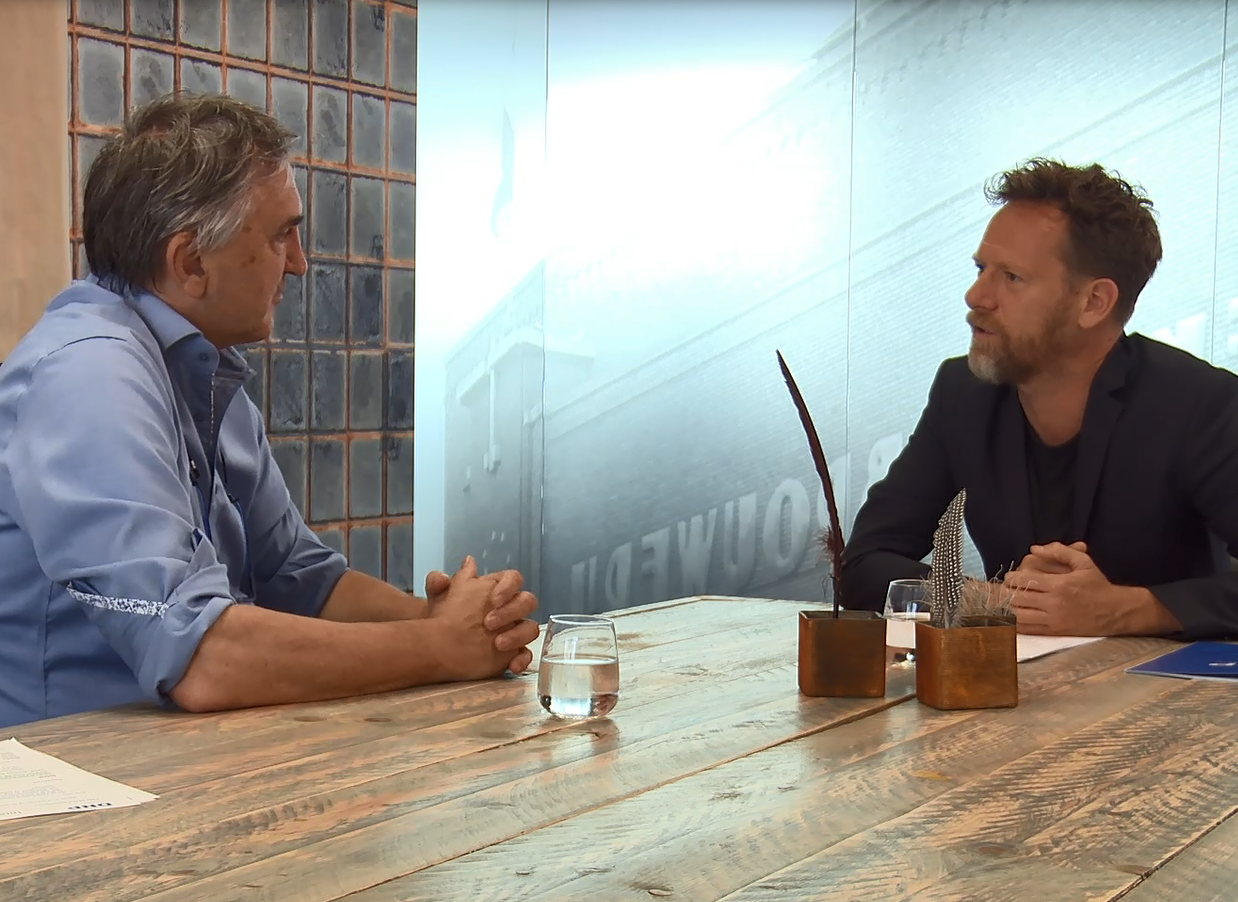What is Thermal Transfer Printing and when is it used?
Thermal Transfer Printing is a technique where the variable print is created by using heat to transfer the ink onto a substrate. With the use of heat, the solid ink melts or softens onto a specific label stock or substrate. It’s a kind of dot-matrix printer.
Most of the time, Thermal Transfer Printing is used on products for the printing of variable data. For example, it’s used for the printing of barcodes, lot numbers, best by dates, and the like. When it comes to Thermal Transfer Printing, the emphasis lies on the fact that you’d print variable information. This is hugely different in comparison to flexo printing techniques, where you print thousands and thousands of pieces with all the same design and information.
So basically if you want to do numbering or specific unique barcoding on packaging such as a serial or lot number or a best by date, you would use Thermal Transfer Printing.
How can you as a consumer or client make the best choice on which Thermal Transfer Ribbon to use?
We have a lot of different applications in a wide variety of industries ranging from pharmaceuticals and automotive to the chemicals or food & beverage packaging industries. When it comes to Thermal Transfer Printing consumers have different types of printers, want to or need to print on different types of substrates, and on top of that different industries and even different applications within the same industry require varying durability and compliance standards.
As an example, there are about 40-60 different types of substrates additionally to which there are different coatings/varnishes added. Even when only considering the variety of different types of substrates, where a Thermal Transfer Ribbon needs to print on, you end up having to harmonize your ribbons with over 100 different types of substrates, and then of course varnishes and substrates all differ per label manufacturer as well.
So when you consider all these demands, there is a great possibility for well-matching and also for non-matching combinations of the printer, substrate, and Thermal Transfer Ribbon. That is when in-lab and possibly even industrial testing comes into the picture.
How does it for example work with labels within the healthcare industry?
Within the healthcare industry, we have to define different applications.
For example, you have a wristband when you are admitted to the hospital as a patient. This helps to identify you, for instance when you are being operated. Additionally, you have prescriptions for medicines with a label on it regards your name, consumption instructions, etc or you have blood bags or labels for on chemical tubes.
All these different applications have their own durability and printing requirements. For example, for wristbands, you need to have great abrasion resistance, but for blood bags, you usually store them in very low temperatures. You might need a Thermal Transfer print for cryogenic use of storing sperm. Here the cryogenic application puts the variable print in a much more demanding environment. On the opposite side, sometimes extreme high temperatures are used in certain applications.
So while very often durability is key for variable prints, it is not always the case. In logistics, for example, durability is much less important. So, in general, it’s really tailor-made advice we need to provide for most applications. This is also the reason why we have a wide range of different resin Thermal Transfer Ribbon formulations. To be able to provide a Thermal Transfer Ribbon formulation that matches both the substrate and the durability and printing requirements of the customer’s specific needs.
How do you offer advice for finding the right Thermal Transfer Ribbon for these specific applications then?
Well, we look at the specific needs of the customer. Here we narrow it down to which specific Thermal Transfer Ribbon range would be the best fitting. At DNP, we have wax, wax/resin, and resin formulations:
- Wax is for less durable applications, mainly used for vellum and other coated and non-coated paper substrates.
- Wax/resin provides the possibility to print on a wider range of substrates e.g. polypropylene, polyethylene, polystyrene, or PET. Here, wax/resin ribbon formulations offer more durability already compared to wax Thermal Transfer Ribbons, however, often enough it might still not offer ultimate durability.
- Resins are the Thermal Transfer Ribbon range that is used for harsh surroundings with high durability demands.
So suppose you are a customer or interested in becoming a customer. To support you in making the right choice for which Thermal Transfer Ribbon would best fit your needs, we focus on providing tailor-made advice for you and support you along your journey.
What we often see is that some customers don’t know what to choose or try to do testing on basis of trial and error, but can’t find seem to harmonise printer, substrate, and ribbon alone. In these cases, we are here to help!
We can help search for the ideal Thermal Transfer Ribbon formulation or product mix for a specific problem they are facing. In these cases, customers can provide us with the specific substrate they aim to print variable data on. We receive information regards to the specific durability or printing demands and we start looking for a suitable formulation at that stage. This is in a tailor-made, personalised manner.
Additionally, we also have a Thermal Transfer Ribbon finder on our website. Here visitors can narrow down their choice to find some fitting formulations to their industry, printer, or substrate type. They can request a free Thermal Transfer Ribbon sample for one or more formulations. This means that they can do testing in their own printing environment.
Last but not least, we do a lot of testing of course, not only on a tailor-made basis but also for ourselves to get a good understanding of all our ribbons and how they perform on the different materials, varnishes, etc. This allows us to give advice rather smoothly, as we have a lot of background knowledge already available. In these cases, it’s best to reach out to our Sales team or Customer Support team, who can help further. In case we don’t have a direct answer, we might need to carry out the first step and take a personalised, tailor-made approach with in-house testing or perhaps even on-site testing support.
That was it for interview #2, next time we will go in-depth about delivering variable print excellence in healthcare. Feel free to reach out to us with any questions you may have, request a free product sample, or reach out to request testing support to find the ideal TTR. Stay tuned, and see you next time!

